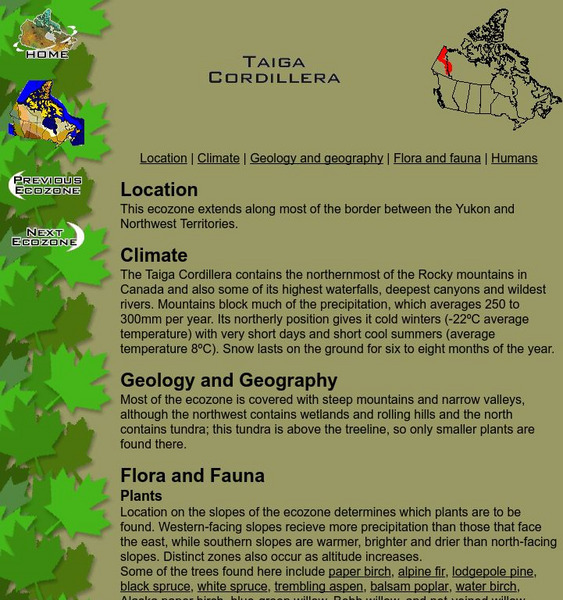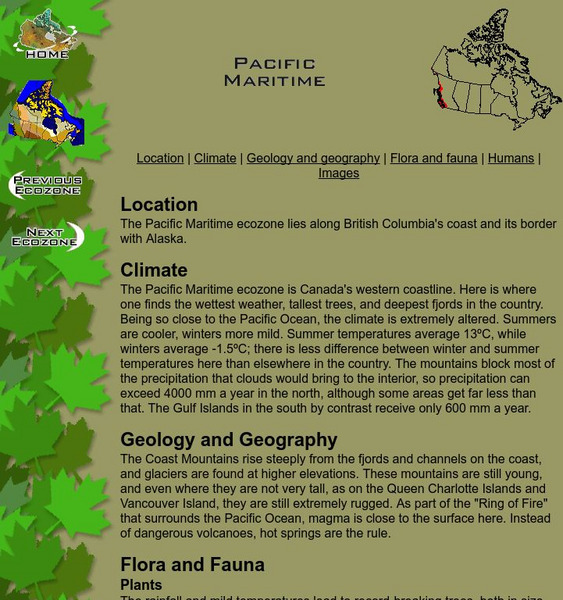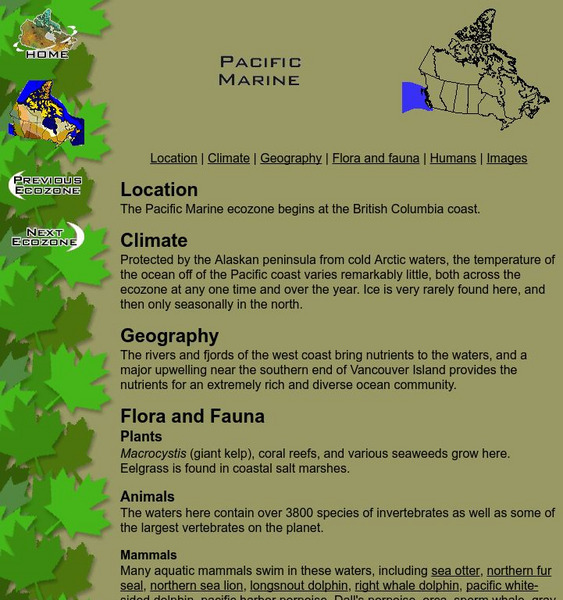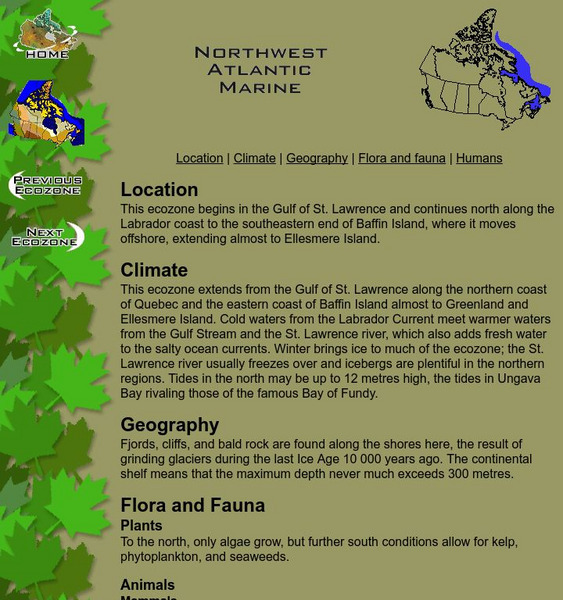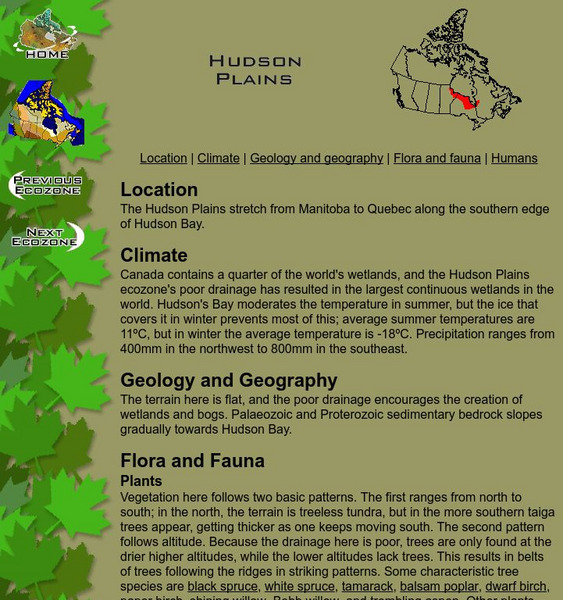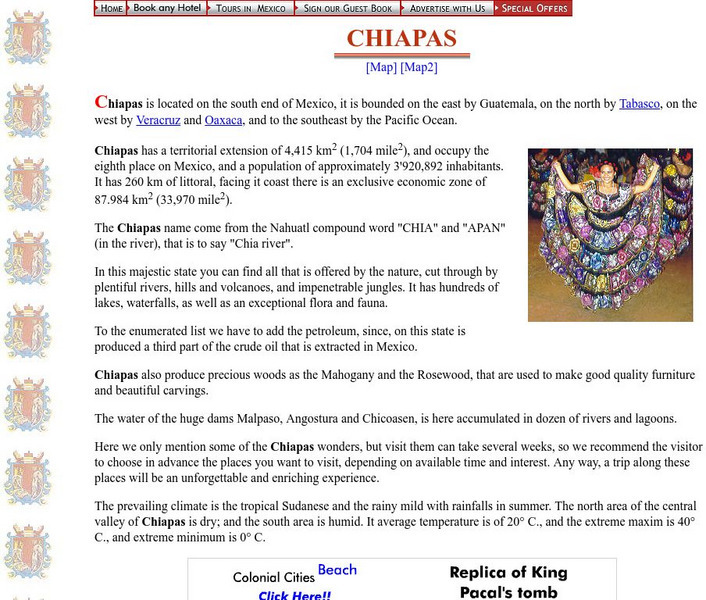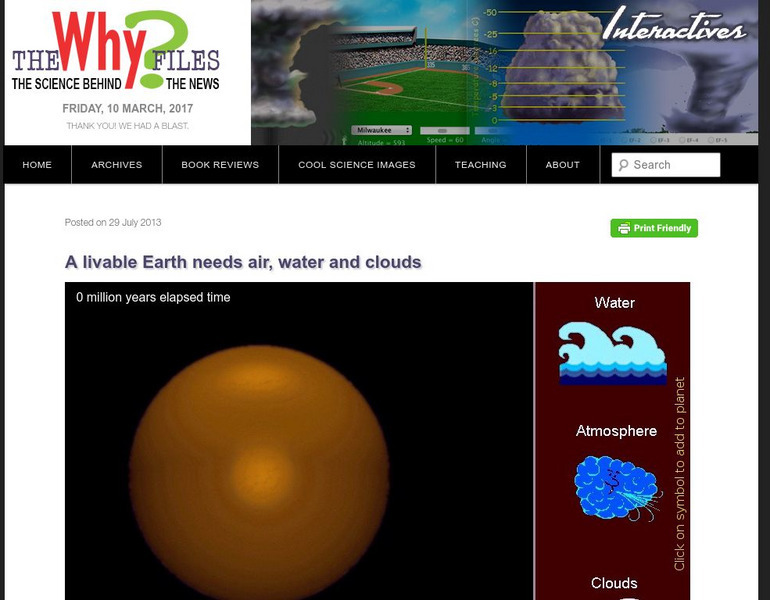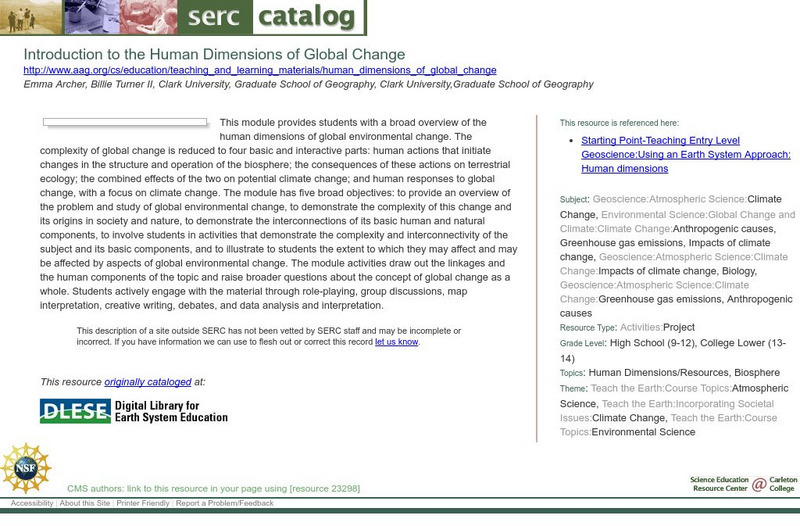Curated OER
Farming in a Fishbowl: How Ethnic Groups in
Seventh graders research Chinese agricultural needs and practices. They conduct an experiment with aquaculture and germinated rice as they take measurements and apply the scientific method.
Curated OER
Spinning the Eco Web
Students examine the components and relationships of ecoregions and ecosystem management. They define ecoregion and ecosystem, list ecoregions, and participate in a simulation that demonstrates the connections between parts of the...
University Corporation for Atmospheric Research
Ucar: Introduction to Climate
A detailed overview of the Earth's climate, with explanations about the difference between weather and climate, dendrochronology, palynology, and how Earth's climate has changed over time. All information is reinforced through pictures,...
Exploratorium
Exploratorium: Global Climate Change: Cryosphere
Examine the effects climate has on the snow and ice covered cryosphere and see live data gathered from the North and South Poles.
CK-12 Foundation
Ck 12: Earth Science: Carbon Cycle and Climate
[Free Registration/Login may be required to access all resource tools.] Explains the cycle of carbon through the atmosphere, geosphere, and biosphere.
Exploratorium
Exploratorium: Global Climate Change: Biosphere
Explore real scientific data relating to the biosphere. With this information, you can gather evidence, test theories, and come to conclusions. Click on the data examples to view a full-scale version.
Science Education Resource Center at Carleton College
Serc: Lab 1: Think Globally: Act Locally
A lab experiment in a series of experiments that explores Earth Science Systems. This lab introduces students to the parts of the Earth system: the atmosphere, hydrosphere, biosphere, and pedosphere. As the students learn about the...
Morning Earth
How Life Works: Biosphere Is Process: Atmosphere and Ocean Currents
Learners examine the Earth science topic of oceanography. The tutorial consists of definitions and pictures on atmosphere and ocean currents.
Other
Interactions Between the Atmosphere & Hydrosphere [Pdf]
A discussion of the interactions between the four spheres of Earth and how they affect weather and climate. The slideshow is divided into two parts. The first deals with interactions between the atmosphere and the hydrosphere and the...
Khan Academy
Khan Academy: Gallery: How Do Earth and Life Interact?
Explore the biosphere, zoom in on some unique ecosystems, and learn how activity in the Solar System and plate tectonics can affect the climate and life on the planet.
TeachEngineering
Teach Engineering: Go With the Energy Flow
Students learn about energy and nutrient flow in various biosphere climates and environments. They learn about herbivores, carnivores, omnivores, food chains and food webs, seeing the interdependence between producers, consumers and...
Other
My Science Box: Ecosystem Organization
In this lesson, learners will learn about the different levels in the hierarchy of ecology and explain the relationships: organism, population, community, ecosystem, biome, and biosphere. They will also discover why different regions...
McGill University
Mc Gill University: Canadian Biodiversity: Ecozones: Boreal Shield
The Boreal Shield runs from Alberta to Newfoundland. This is a brief, concise description of the location, climate, geology and flora and fauna. It includes a collection of images of the landscape as well as those of animals and birds...
McGill University
Mc Gill University: Canadian Biodiversity: Ecozones: Taiga Cordillera
The Taiga Cordillera extends along the border of the Yukon and Northwest Territories. This is a brief, concise description of the location, climate, geology and flora and fauna. It includes a collection of images of the landscape as well...
McGill University
Mc Gill University: Canadian Biodiversity: Ecozones: Pacific Maritime
The Pacific Maritime ecozone lies along the British Columbia coast and it's border with Alaska. This is a brief, concise description of the location, climate, geology and flora and fauna. It includes a collection of images of the...
McGill University
Mc Gill University: Canadian Biodiversity: Ecozones: Montane Cordillera
The Montane Cordillera covers most of southern British Columbia and some of southwestern Alberta. This is a brief, concise description of the location, climate, geology and flora and fauna. It includes an excellent collection of images...
McGill University
Mc Gill University: Canadian Biodiversity: Ecozones: Pacific Marine
The Pacific Marine ecozone begins at the British Columbia Coast. This is a brief, concise description of the location, climate, geology and flora and fauna. It includes some images of the animals and birds native to the location. Many of...
McGill University
Mc Gill University: Canadian Biodiversity: Ecozones: Northwest Atlantic Marine
The Northwest Atlantic Marine ecozone begins in the Gulf of St. Lawrence and extends to the southeastern end of Baffin Island. This is a brief, concise description of the location, climate, geology, and flora and fauna. It includes some...
McGill University
Mc Gill University: Canadian Biodiversity: Ecozones: Arctic Archipelago Marine
The Arctic Archipelago Marine ecozone includes Hudson Bay and most of the water surrounding the islands of Nunavut and the Northwest Territories. This is a brief, concise description of the location, climate, geology, and flora and...
McGill University
Mc Gill University: Canadian Biodiversity: Ecozones: Hudson Plains
The Hudson Plains ecozone stretches from Manitoba to Quebec along the southern edge of the Hudson Bay. This is a brief, concise, description of the location, climate, geology and flora and fauna. It includes a collection of images of the...
Other
Chiapas
Description of the state of Chiapas, including climate, tourist destinations, natural resources, and inhabitants.
University of Wisconsin
The Why Files: A Livable Earth Needs Air, Water, and Clouds
Make Earth's climate livable by adding the right amount of air, water, and clouds to its surface and atmosphere.
Science Education Resource Center at Carleton College
Serc: Introduction to the Human Dimensions of Global Change
Learning module introduces students to the human dimensions of global environmental change: human actions that initiate changes in the structure and operation of the biosphere; the consequences of these actions on terrestrial ecology;...
Science Education Resource Center at Carleton College
Serc: Earth System Science
Students learn to identify the parts of the Earth system and the processes that connect them. They look for interconnections among components of the Earth system at the local level, using a study site close to their school.


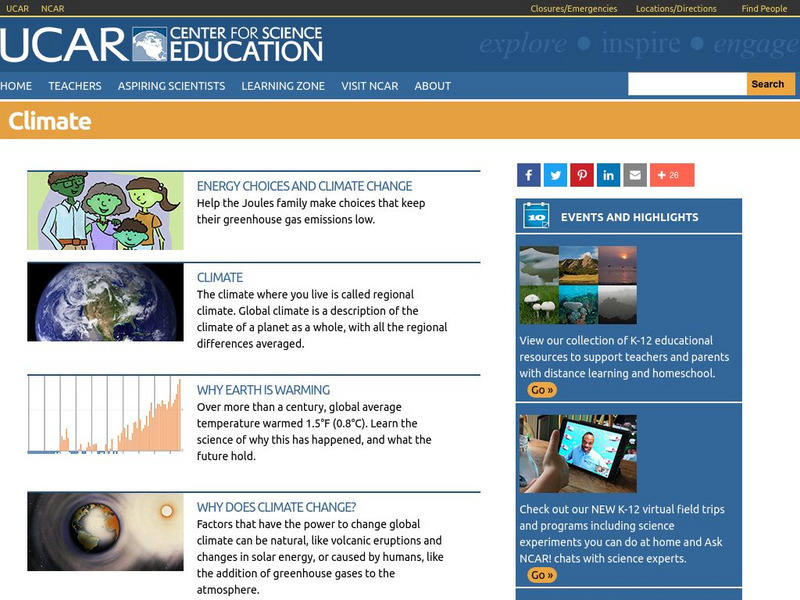

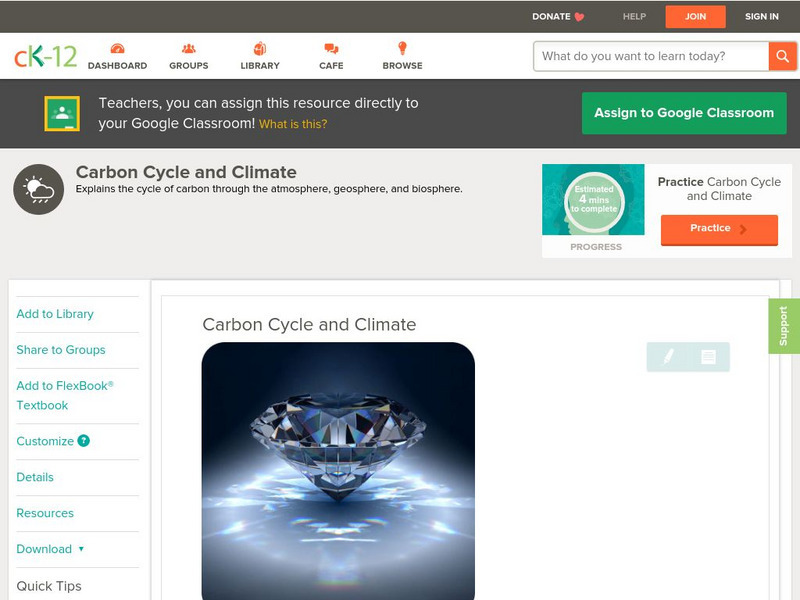
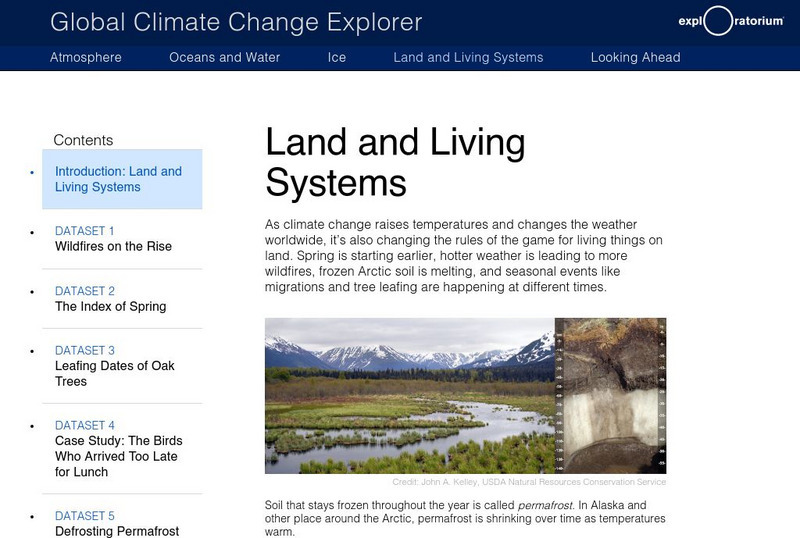


![Interactions Between the Atmosphere & Hydrosphere [Pdf] PPT Interactions Between the Atmosphere & Hydrosphere [Pdf] PPT](https://d15y2dacu3jp90.cloudfront.net/images/attachment_defaults/resource/large/FPO-knovation.png)



